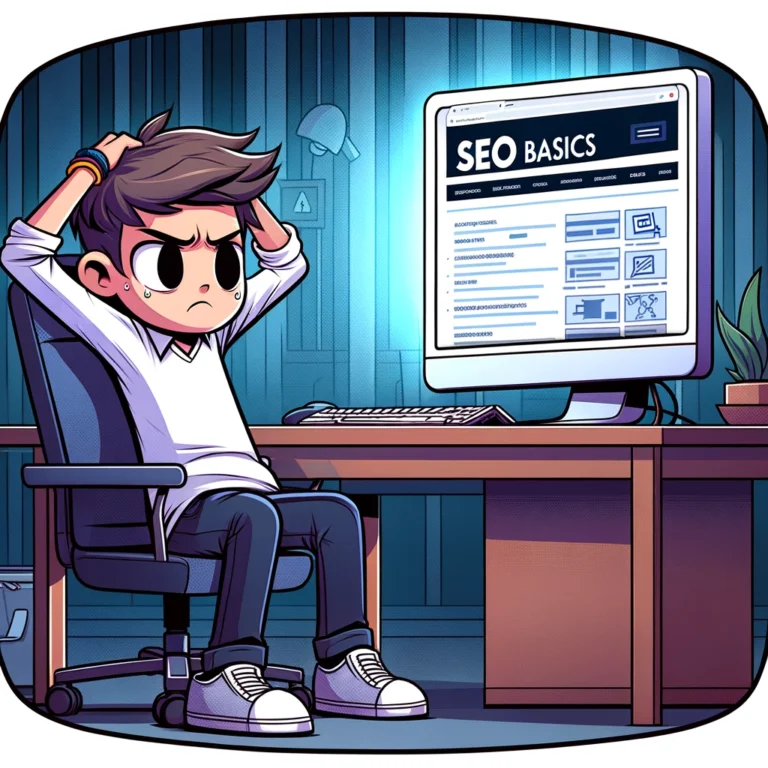Search engine optimization (SEO) is an essential practice for anyone looking to increase their website’s visibility online. At the heart of SEO lies the process of indexing, a critical operation where search engines like Google, Bing, and Yahoo! scan, analyze, and store information from your website. Understanding how this process works can significantly impact your SEO strategy and help you optimize your site more effectively.
What is Indexing?
Indexing is the method by which search engines organize information before a search to enable fast responses to queries. When your website is indexed, search engines store your site’s information in their database, which they later retrieve when users conduct searches. Think of it as adding your site’s pages to the library of the internet where search engines are the librarians who categorize and pull up the book (webpage) to help the library visitor (user).
How Does the Indexing Process Work?
- Crawling: Before indexing, search engines must first discover your website through a process called crawling. Crawling is when search engine bots, also known as spiders, follow links from one page to another. They start from known pages and, as they discover new links on these pages, add them to their list of pages to crawl. This is why having backlinks, or links from other websites to yours, is crucial.
- Processing and Analyzing: Once a page is crawled, the search engine analyzes the content of the page to understand what it is about. This includes reading the text, images, and other media files, as well as understanding the overall context and structure of the information. The content is then processed using algorithms that determine its quality, relevance, and authenticity.
- Indexing: If the search engine algorithm deems a page to be valuable and relevant, it will include it in its index. An index is like a massive digital catalog of all the websites it has reviewed and approved. The specifics of the indexing process depend on the search engine’s proprietary algorithms, which are kept confidential to prevent manipulation of search results.
- Ranking: While not part of indexing per se, ranking is the subsequent step where the indexed pages are sorted based on various factors, including keyword relevance, site usability, page speed, and many others. When a search query is entered, the search engine scans through its index to provide the most relevant results to the user.
Best Practices for Optimizing for Indexing
- Improve Website Structure: Ensure that your website has a clear, logical structure with a well-defined hierarchy. Use proper tags (like H1, H2) for headings and ensure that your URLs are descriptive and concise.
- Use Robots.txt: This file tells search engines which parts of your site should not be crawled and indexed. Properly configuring this can prevent search engines from indexing duplicate content or irrelevant sections of your site.
- Optimize Content Quality: Search engines prefer content that is well-written, informative, and organized. Make sure your content uses keywords appropriately and offers real value to its readers.
- Enhance Link Quality: Both internal links (links within your own site) and external links (links from other reputable sites) can affect how well your site is indexed. Good quality links can lead to more frequent crawling, which can help keep your site’s content fresh in the index.
- Responsive Design: Ensure your website is mobile-friendly. Search engines often prioritize mobile-optimized sites as most searches now come from mobile devices.
- Loading Speed: Websites that load faster are favored by search engines and are likely to be indexed quicker. Optimize your site’s loading time by compressing images, leveraging browser caching, and minimizing the use of heavy scripts.
Understanding and optimizing for the indexing process is fundamental in SEO. By ensuring your site is crawlable, well-structured, and filled with quality content, you improve your chances of being properly indexed and ranked by search engines. This not only enhances your site’s visibility but also its usability, providing a better experience for your visitors and potentially leading to higher conversions and success in your online endeavors.

Continual Monitoring and Updating
Keeping your website indexed effectively doesn’t end with initial optimization. The internet is dynamic, and search engine algorithms frequently change. Regular monitoring and updating of your website are essential to maintaining and improving its position in search engine results.
- Regular Content Updates: Search engines favor websites that regularly update their content. This can mean adding new articles, updating existing ones, or expanding sections of your site to reflect new information. Fresh content not only encourages regular re-crawling by search engine bots but also keeps your audience engaged.
- Use Webmaster Tools: Tools like Google Search Console and Bing Webmaster Tools are indispensable for SEO. They provide insights into how your site is being crawled and indexed, alert you to errors such as broken links or security issues, and let you see which queries bring users to your site.
- Monitor Performance Metrics: Analyzing metrics such as bounce rate, time on site, and pages per session can give you insights into user behavior and potential content issues. High bounce rates, for example, might indicate that your site isn’t meeting user expectations or that your pages load too slowly.
- Address Technical SEO: Technical SEO refers to website and server optimizations that help search engine spiders crawl and index your site more effectively. This includes using secure sockets layer (SSL), creating an XML sitemap, implementing structured data (schema markup), and ensuring your site uses HTTPS to secure user data.
Adapting to Algorithm Updates
Search engines are constantly improving their algorithms to provide the best user experience. These updates can sometimes cause significant fluctuations in your website’s search rankings. Staying informed about these updates and adapting your SEO strategy accordingly is crucial.
- Educate Yourself: Keep up with SEO news from reputable sources and participate in forums and discussions to learn about others’ experiences and strategies.
- Perform SEO Audits: Regular SEO audits help identify weaknesses in your site that could affect your ranking. These audits should cover on-page elements like content and meta tags, off-page SEO like backlinks, and technical aspects like site speed and mobile usability.
- User Experience (UX) Optimization: With user engagement factors increasingly influencing SEO, improving the overall user experience can enhance your site’s search engine ranking. This means designing your site to be user-friendly, with intuitive navigation, fast loading times, and accessible content.
Encouraging Re-Indexing
Sometimes, you may need to prompt search engines to re-index your site, especially after making significant updates or corrections. Here’s how you can encourage this process:
- Request Re-crawling: Most webmaster tools offer the option to manually request a crawl of your website. Use this feature after making significant changes to ensure that the latest version of your site is indexed.
- Update Your Sitemap: If you add or remove pages, update your sitemap and resubmit it to search engines. This not only informs them of the change but also aids in quicker indexing of new content.
Conclusion
In the dynamic world of SEO, the process of indexing is just the beginning. A proactive approach to maintaining your site’s visibility involves continuous optimization, monitoring, and adapting to new search engine guidelines. By staying vigilant and responsive to these changes, you can help ensure that your site remains competitive and visible, driving more traffic and engagement over time. This continuous cycle of improvement not only enhances your SEO efforts but also boosts the overall experience for your users, making your site a reliable and valuable resource on the web.



